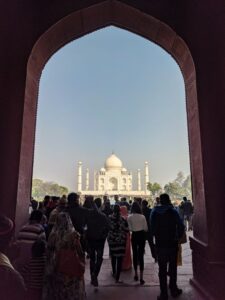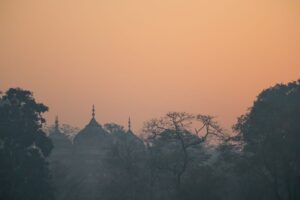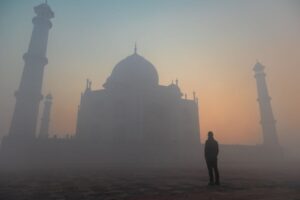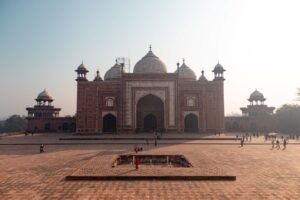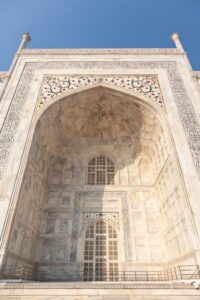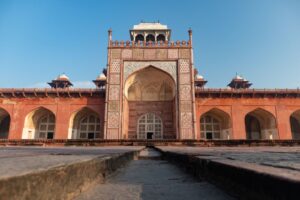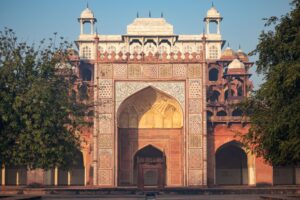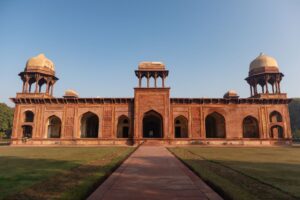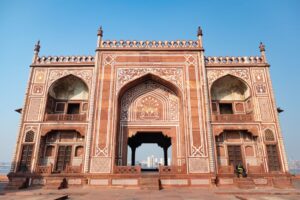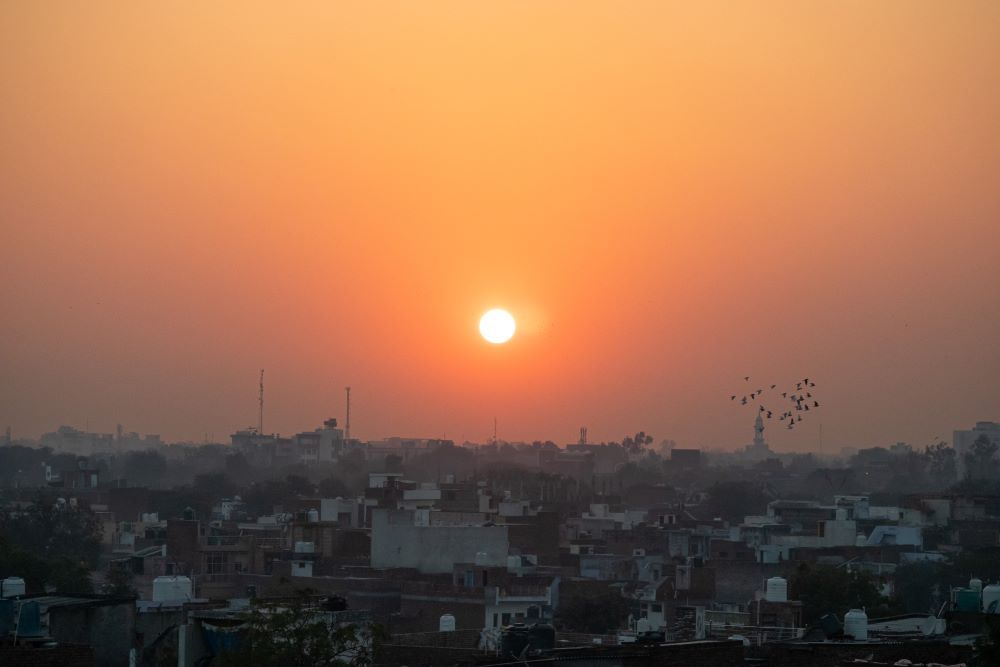
India is a vast country with an overwhelming number of captivating sights and arguably the best cuisine in the world. Ok, that statement about the local cuisine could well be more a personal opinion, but I dare to say that India is nothing short of a spectacular country.
While many people have never heard of the city of Agra, I think everyone can associate India with the exquisite beauty of one of the Seven Wonders of the modern world located precisely in that city: the Taj Mahal. Naturally, when I finally prepared my gear to travel to India, I did not think twice to include this city in my route. Agra is in fact part of the famous northern India itinerary called the Golden Triangle, along with New Delhi and Jaipur.
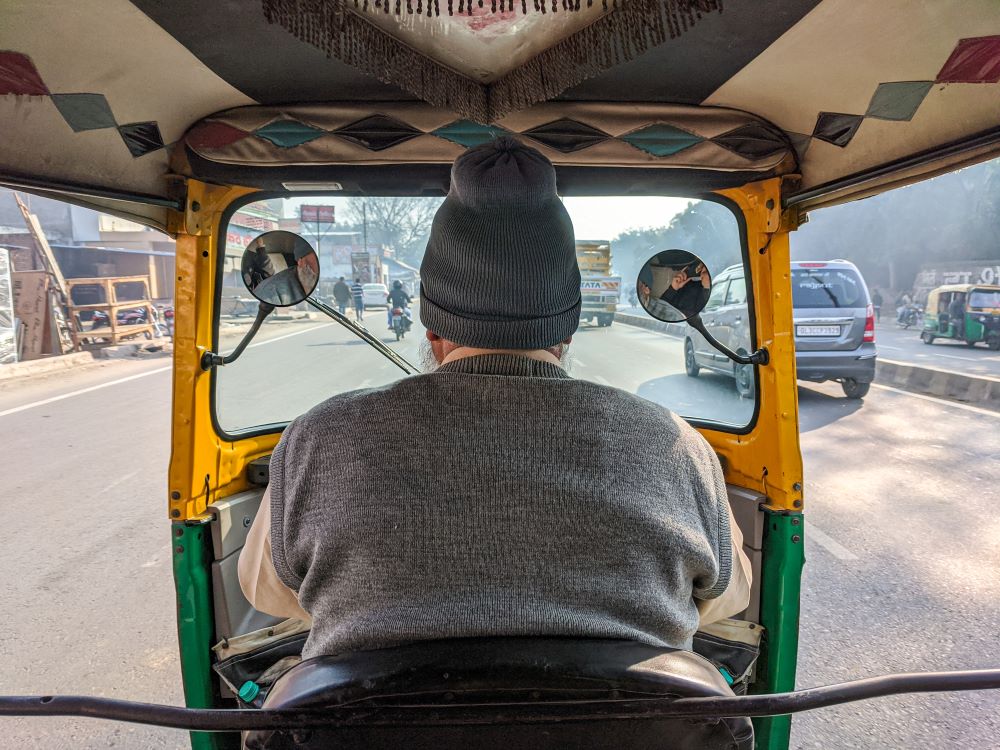
Once in Agra, I discovered that there is so much more to discover beyond this majestic ivory-white marble mausoleum that is also a UNESCO World Heritage Site. I traveled within the city in a Tuk-tuk exploring many other incredible yet underrated buildings and monuments.
In fact, for better or worse, the Taj Mahal and the Agra Fort draw so much attention that it is easy to visit those sites, and find them almost empty of people. Thus, besides sharing these places with a few couples, monkeys, antelopes and peafowls, I had plenty of time and space to try different photographic compositions in silence, and enjoy the quietness, like a parenthesis in the middle of the bustling streets so easily found in India. Not that those bustling streets did not offer a feast to my eyes between stops.
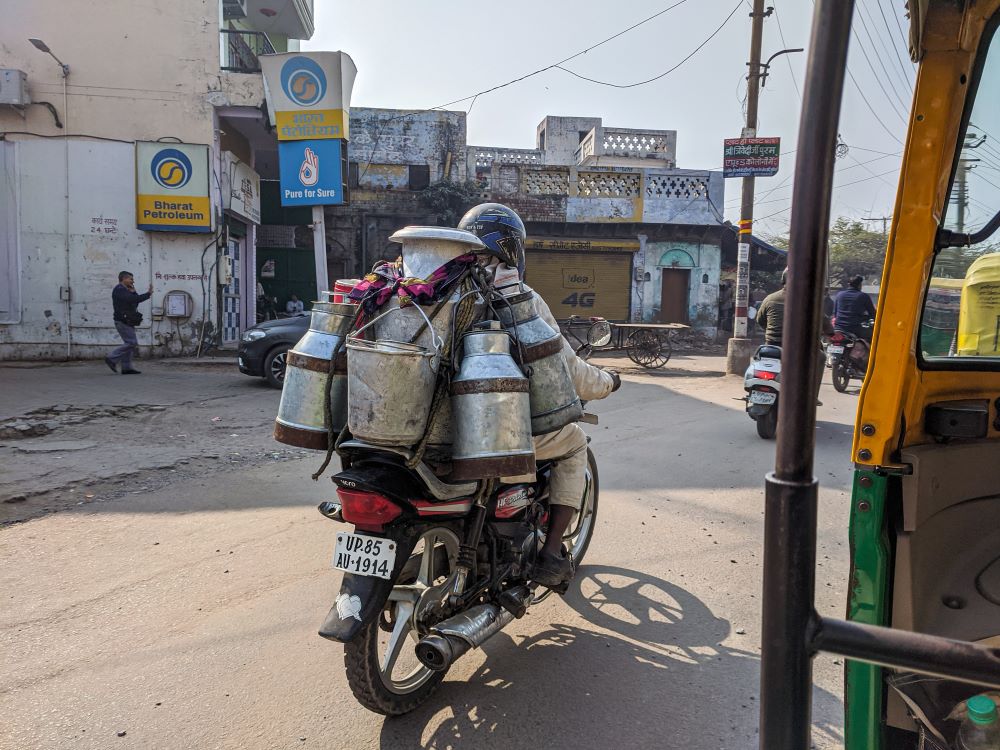
Looking back at these photos, I still find it hard to believe I was actually there, walking, breathing and admiring these architectural marvels and the everyday life around them. Here below is the curation I made of each place I visited during my time in Agra, grouped in four sections.
The Taj Mahal
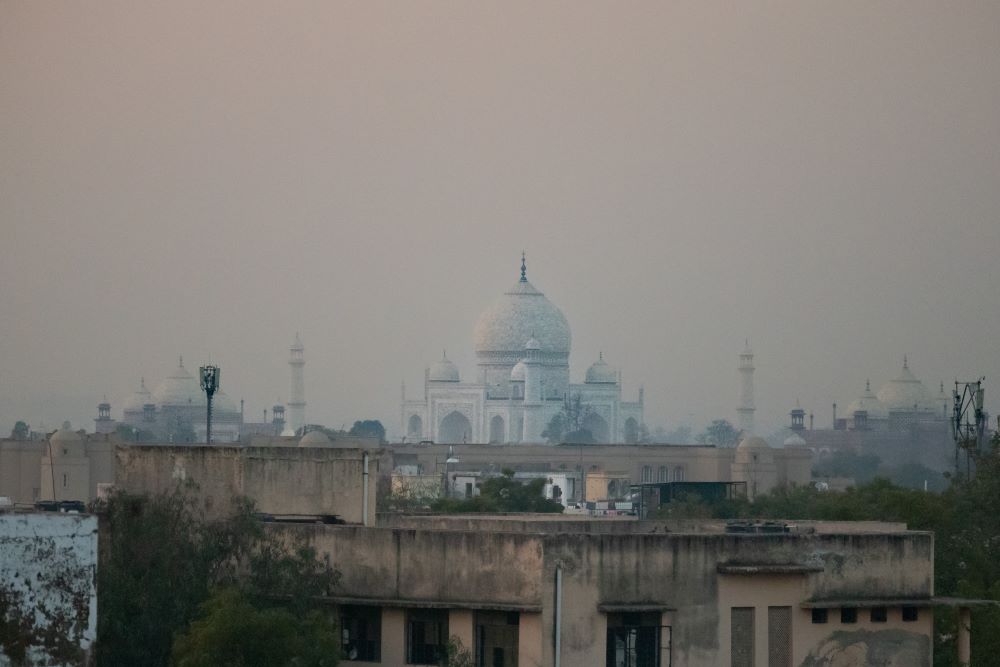
As I said above, the Taj Mahal is arguably the main reason people travel to Agra. I know it was for me. Just setting foot in its outer quarters was a surreal experience. Not to mention the utter amazement of standing before one of the most exquisite wonders humans have ever put together.
To make the best use of the natural light to take photos, I woke up a couple of hours before the sun came up and walked from my accommodation to the complex entrance just before dawn. Through the Mughal Gate threshold, the iconic rounded dome of the Taj Mahal was visible on top of the frame. On the bottom, a small sea of people was already blocking the view of the lower parts of this astonishing mausoleum.
Once inside, the lightning conditions shifted quite dramatically as the morning progressed. First, the thick mist from the Yamuna River had every shape in the immediate area submerged in a shroud of grayish blue, adding to the already magical atmosphere of this place. As the morning went by, the air cleared out and I took my time to admire and portrait this marvel from different angles.
Tomb of Akbar and Tomb of Mariam-Uz-Zamani
When time is a constraint, there is no mistake in choosing to visit the Taj Mahal in Agra. However, with some extra days, it is possible to explore the rest of the history-rich sites that the city has to offer. That is how my next stop was the Tomb of Akbar, the final resting place of Emperor Akbar of the Mughal Empire who lived in the sixteenth century.
To give a bit of context (and a reminder to myself as well), Akbar’s grandson, Shah Jahan erected the splendid Taj Mahal, which was constructed as the final resting place for his wife Mumtaz Mahal. Later, he was also buried in the same place.
The first thing that stood out to my eyes was the impressive “redness” of the sandstone structures, and the incredibly intricate marble inlay work of almost every wall and floors.
Moreover, despite not having more than a short introduction at the entrance to educate me about the craftsmanship used to build this place, the artistic brilliance of the craftsmen of the time speaks for itself.
Just like the Emperor Akbar, his wife Mariam-Uz-Zamani’s final resting place is located in Agra. In modern days, just across the street towards the southwest. I heard from my Tuk Tuk driver that young couples favor the Tomb of Mariam-Uz-Zamani because it is said that the love of the imperial couple of centuries past, still displayed in the shape of beautiful mausoleums, brings good fortune to those couples looking for a love that transcends time. Personally, if I didn’t know these places were actual tombs, I would say their quiet and well preserved gardens indeed make them great places for dating.
Itmad-ud-Daula (Baby Taj)
Nicknamed the “baby Taj”, this is the final resting place of Mirza Ghiyas Beg, the grandfather of Mumtaz Mahal. And if you have been following the story above, this was the wife of Shah Jahan. Both of which are buried in the Taj Mahal.
What this mausoleum lacks in size compared to the Taj Mahal, it compensates with ornamentation. From the outside, I could not help to compare this tomb sitting on the eastern bank of the Yamuna River to a jewel box due to its intricate and colorful ornamentation. I learned on site that this structure actually served as a draft for the majestic Taj Mahal, something that it is not hard to believe looking at its white marble walls, encrusted with semi-precious stone decorations.
Like the mausoleums of Akbar and Mariam-Uz-Zamani that I visited before, the area is a big square divided into four smaller quadrants, with the mausoleum in the center, and access gates in the middle point of each side. These four gates, however, do not seem to be particularly aligned with the cardinal points.
Agra Fort
Probably the second biggest tourist attraction in Agra, the Agra Fort was the last stop of my tour through the city. Certainly no less impressive. In fact, I think this complex deserves at least a whole day of exploring to actually make justice to all its beauty and historical importance.
This landmark is in fact another UNESCO World Heritage Site in Agra, aside from the Taj Mahal, and often referred to as the “Red Fort of Agra”.
It was a bit unfortunate for my photographic endeavors that my time was already running out when I got to the fort. Thus, I only had time for a quick walk across its palaces, mosques, audience halls and gardens, looking for opportunities for clean shots here and there. I am pretty sure that I could have used the assistance of a guide for this one to understand at least the surface of a very dense history that spans many centuries.



